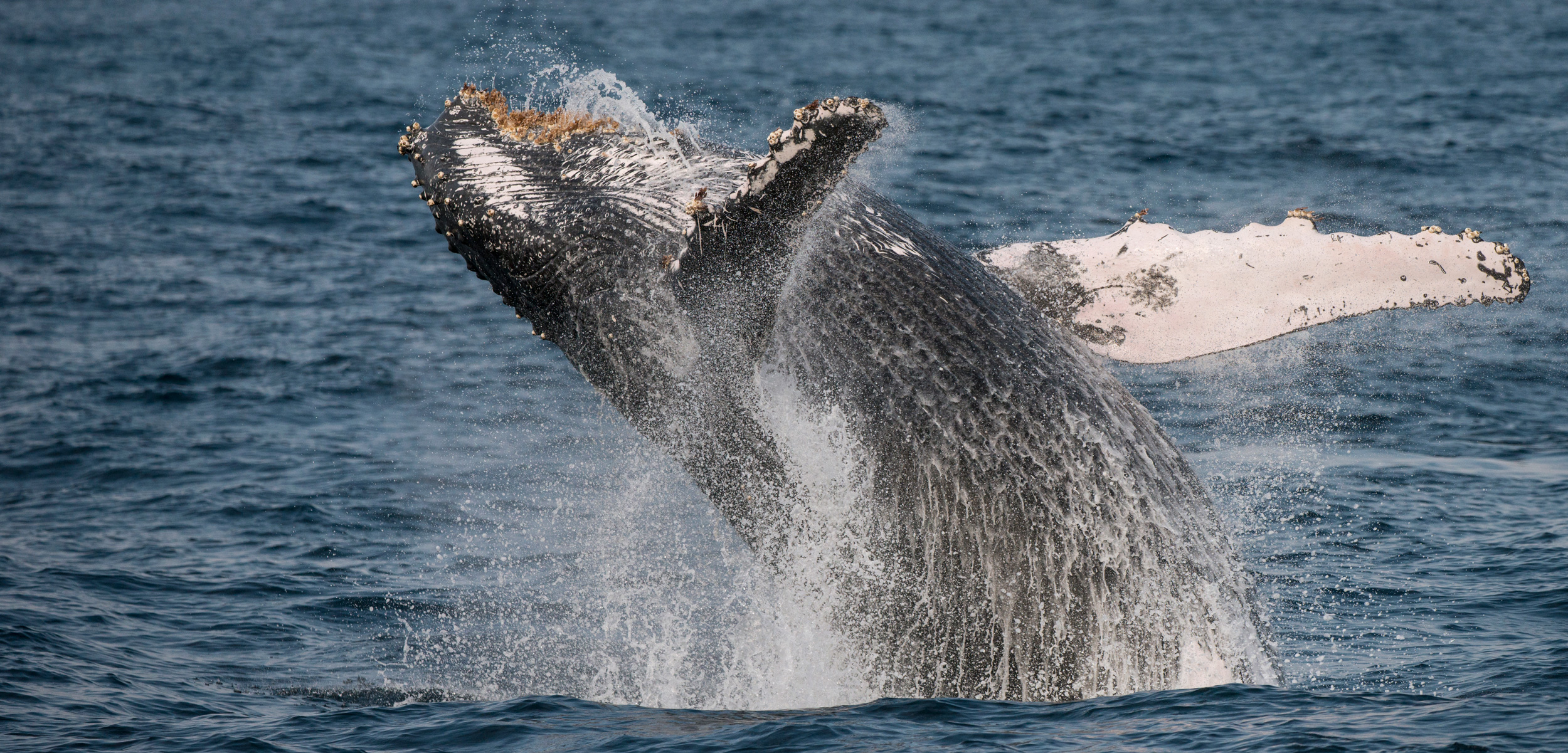Why Whales Leap Into the Air
After hundreds of hours of observations, we now know it’s true: breaching humpback whales are yelling.
Article body copy
Just off the easternmost tip of Australia, a 36-tonne humpback whale launches itself out of the water, twists midair, and crashes back into the sea. Breaching is among nature’s grandest spectacles—and one of nature’s grandest gestures. New research conducted by University of Queensland marine biologist Ailbhe S. Kavanagh confirms what many cetacean biologists have long suspected: breaching is a whale’s way of saying hello.
Because the ocean can be such a murky place, many marine animals have turned to sound to communicate. Sound travels far more efficiently in water than light does. Humpback whales (Megaptera novaeangliae) are among the best-known ocean vocalists. While the haunting songs of males have been well studied, the “social sounds,” produced by humpback males, females, and calves alike, are less understood. These include sounds produced as a result of “surface-active behaviors,” such as breaching, tail slapping, and fin slapping. The whales use their body parts as mallets to strike the water like a drum; the result is a loud noise.
“They’re potentially using [these behaviors] when background noise levels are higher,” Kavanagh says, “as the acoustic signal possibly travels better than a vocal signal would.” It’s akin to the human custom of communicating over long distances or too much noise via drums. Likewise, whales need alternative means of communication when conversing over long distances.
The puzzling thing is that it takes quite a bit of energy to perform surface-active behaviors, and they’re being performed during migration, when most whales are fasting. It stands to reason that these behaviors are really important.
To study these particular whale behaviors, Kavanagh and her team stationed themselves at Australia’s Peregian Beach in September and October of 2010 and 2011. There, they could easily watch the whales from the shore, since they pass within 10 kilometers of the coastline on their migration from tropical breeding grounds to Antarctic foraging grounds. The group collected observations on 76 groups of whales, 88 percent of which displayed surface-active behaviors.
A pattern emerged from over 200 hours of observation: whales were more likely to breach when the nearest group was more than four kilometers away. Breaching helps whales communicate between, rather than within, groups. Tail and fin slapping, on the other hand, was more of a close-range action, used before and after two groups joined up or split apart. This highlights slapping’s possible function in maintaining diplomacy both between and within small groups.
The results, published in the journal Marine Mammal Science, also showed that whales were more likely to perform surface-active behaviors when it was windy.
“This makes absolute perfect sense,” says Chris Parsons, a cetacean biologist at George Mason University in Virginia who was not associated with this research. “Even though these whales can produce calls that travel great distances, if there’s a lot of noise, it might be easy to drown out. Leaping up in the air and splashing down is equivalent to the really keen kid in a classroom jumping up and down waving his arms.”
While Kavanagh’s conclusions aren’t surprising, Parsons says they finally confirm the assumptions marine mammal researchers have made for decades. “I remember sitting around a campfire while doing a survey for humpback whales in South Africa in 1991, and we were talking about why these animals do this,” he says. “It’s nice we’re now getting the statistical ability, the time and resources and equipment, to actually answer the questions we’ve been wondering about.”

